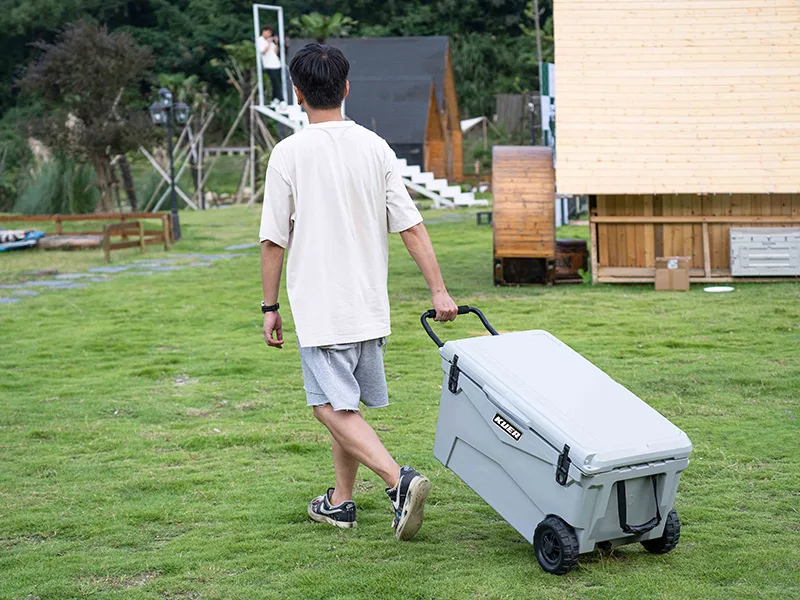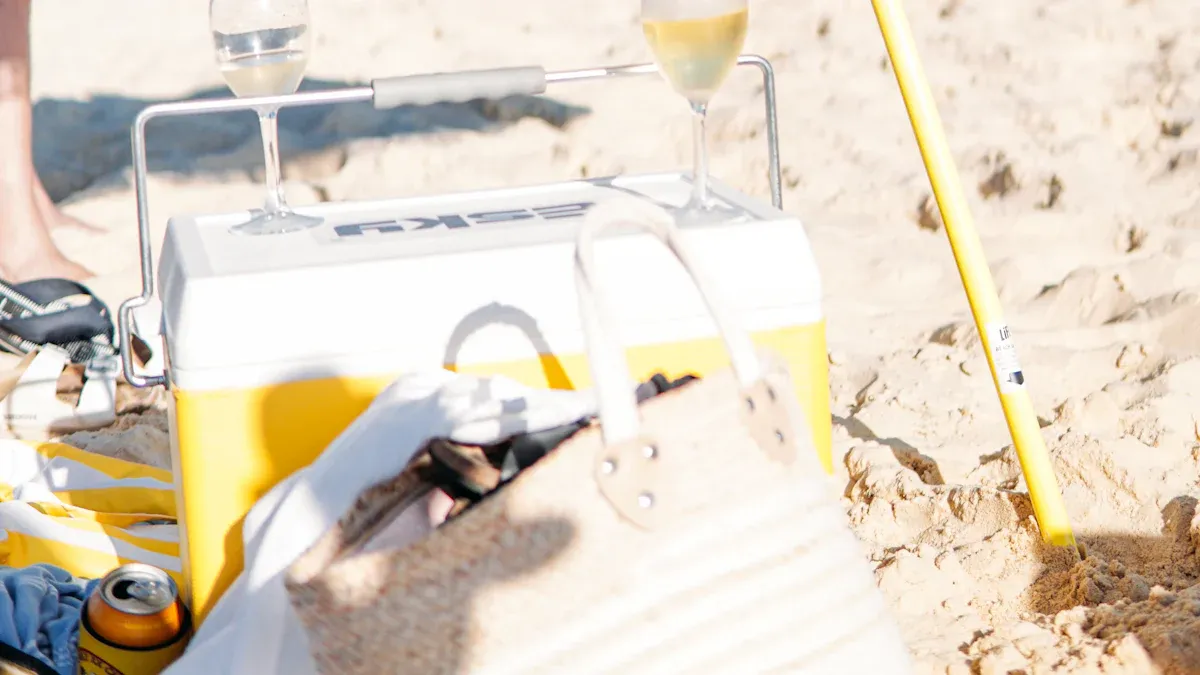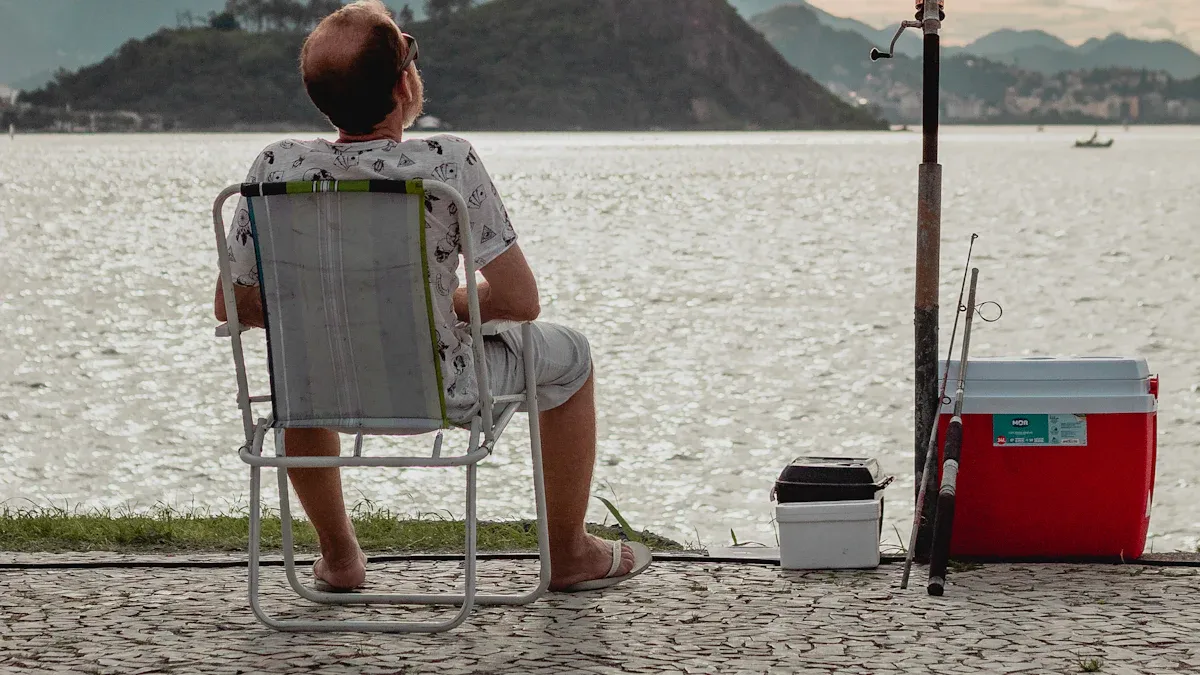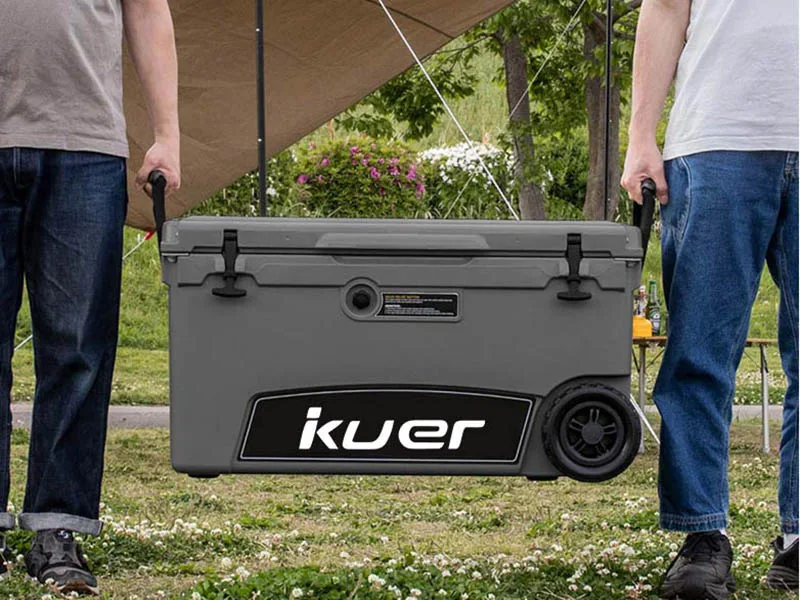
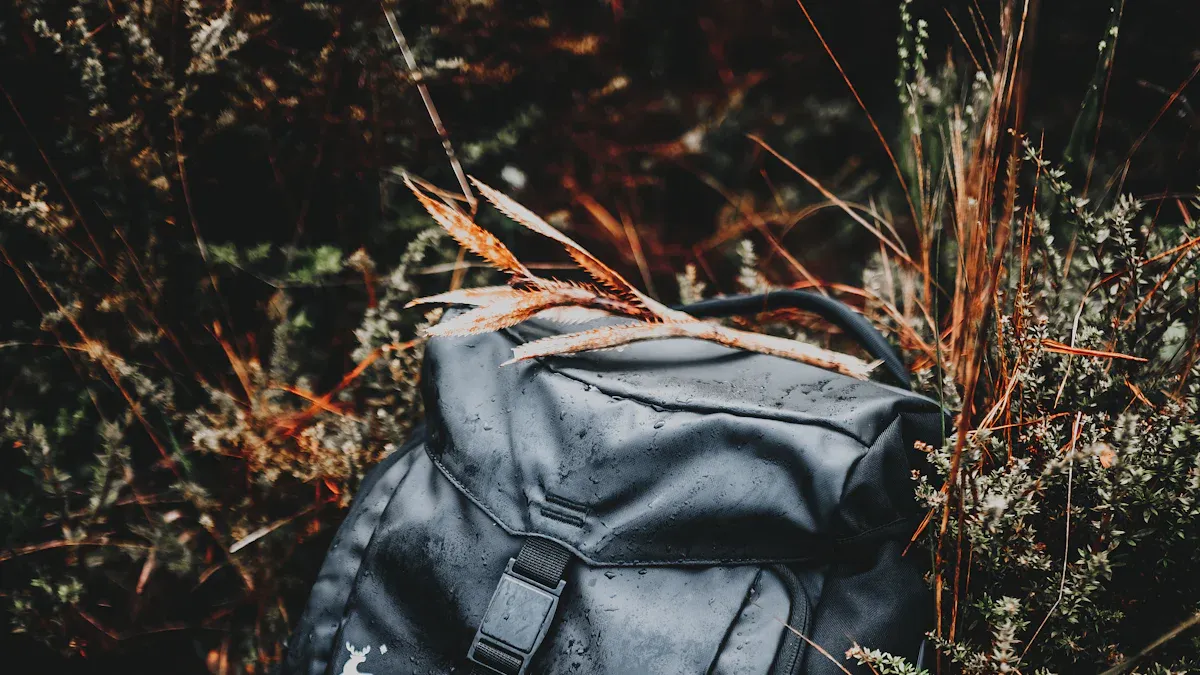
You want to find the perfect companion for your meals on the go. The market for personal cooler bags is growing, showing how many people rely on them.
| Metric | Value |
|---|---|
| Global Cooler Bags Market Size (2023) | USD 3.9 Billion |
| Projected CAGR (2024-2032) | 3.8% |
To choose a cooler bag, you should evaluate four simple things. Consider the size, insulation, durability, and features. This guide gives you the knowledge to select the right cooler bag with confidence. You will find the ideal personal cooler bag for any occasion.
HOW TO CHOOSE A COOLER BAG: SIZING
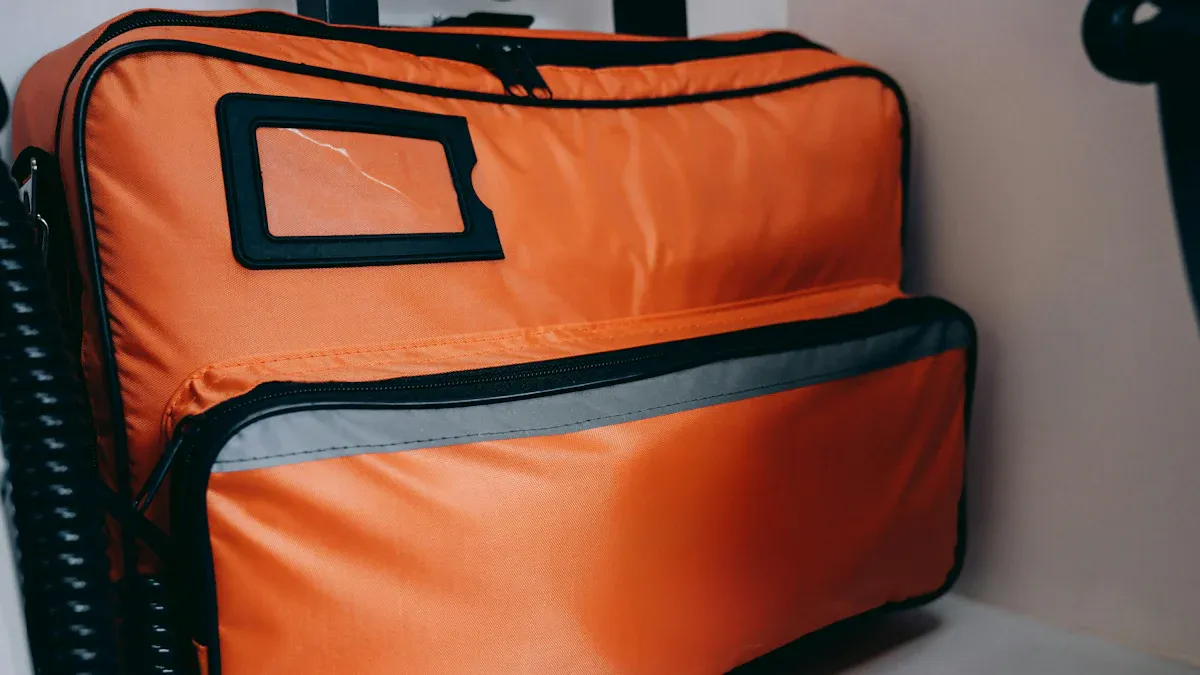
The first step when you choose a cooler bag is to determine the right size and capacity for your needs. A bag that is too small will not hold everything you need. A bag that is too large can be heavy and waste cooling power. Your ideal total capacity depends on what you plan to carry and for how long.
You can use this simple chart to understand common cooler sizes.
| Category | Quart Capacity |
|---|---|
| Small | 4 to 16 quarts |
| Medium | 17 to 35 quarts |
| Large | 36+ quarts |
SMALL COOLERS FOR DAILY USE
Small coolers have a capacity of 4-10 quarts. This size is perfect for your individual needs. You can easily pack a single meal, a drink, and a snack. These coolers feature compact, lightweight designs for easy transport. A small personal cooler bag is an excellent choice for many daily activities.
Common Uses for Small Coolers:
- Lunchboxes: They hold sandwiches, fruit, and several drinks.
- Picnics: Some models have extra pockets for utensils or napkins.
- Beach Days: They keep your food and drinks fresh for hours in the sun.
- Hiking: A small backpack cooler carries essentials without adding too much weight.
MEDIUM COOLERS FOR DAY TRIPS
Medium coolers offer a capacity between 15 and 30 quarts. This size works well for couples or small groups of 2-4 people. They provide enough space for a full day’s worth of food and drinks. Many medium bags include convenient features. Look for padded shoulder straps for comfortable carrying. Multiple compartments also help you organize dry goods separately from cold items.
LARGE COOLERS FOR ADVENTURES
Large coolers provide 30 quarts or more of storage space. You should select this size for group outings, long weekends, or extended adventures. A large personal cooler bag can hold provisions for the whole family or a group of friends. For maximum portability with a heavy load, consider a backpack-style cooler. This design keeps your hands free while you travel to your destination.
UNDERSTANDING INSULATION AND ICE RETENTION
A cooler’s ability to keep its contents cold is called ice retention. This performance depends entirely on the quality of its insulation. A great personal cooler bag uses a system of materials and design features to fight heat. Heat tries to enter your cooler in three ways: conduction (direct transfer), convection (air movement), and radiation (heat waves). Effective insulation blocks all three.
How a Cooler Fights Heat:
- Blocks Conduction: A thick foam core stops heat from passing through the cooler’s walls.
- Reduces Convection: Airtight seals and minimal empty space prevent warm air from circulating inside.
- Reflects Radiation: A reflective inner liner bounces heat waves away from your food and drinks.
Understanding these elements will help you choose a bag that delivers the long-lasting cooling you need.
FOAM INSULATION TYPES
The heart of any personal cooler bag is its foam insulation. The type of foam used directly impacts how long your ice will last. You will generally find two types.
- Standard Open-Cell Foam: This foam is lightweight and flexible. You often find it in basic lunch bags. It provides enough insulation for a few hours but is not designed for all-day cooling.
- High-Density Closed-Cell Foam: This is the key to superior ice retention. The cells in this foam are tightly packed and sealed, which makes it much harder for heat to pass through. This material provides significantly better thermal resistance.
You can measure an insulation’s effectiveness with an R-value. A higher R-value means better performance.
| Foam Type | R-value per inch |
|---|---|
| Closed-cell | R5.6 to R8 |
| Open-cell | R3.6 |
Premium brands build their personal cooler bags with superior materials. For example, KUER uses a high-density closed-cell PU (Polyurethane) foam. This advanced insulation is what gives a high performance insulated cooler the ability to achieve excellent ice retention for days, not just hours.
HARD VS. SOFT LINERS
The liner is the inside wall of your cooler. It must be waterproof and durable. You will choose between a hard plastic liner and a flexible soft liner. Each has its benefits.
- Hard Liners: These are typically found in traditional hard-sided coolers. Their thick, molded walls provide excellent structural support and contribute to long-term ice retention, sometimes lasting up to 48 hours. They are very durable and easy to clean.
- Soft Liners: Modern personal cooler bags use advanced soft liners, often made from waterproof PEVA or PVC. While a basic soft cooler may only hold ice for 4-6 hours, a high performance insulated cooler uses multiple layers of insulation. This layered design can offer thermal performance that rivals many hard coolers.
Ultimately, the quality of the entire cooler system is more important than just the liner type. A well-built soft cooler with multiple layers will easily outperform a poorly made hard cooler with thin walls.
THE ROLE OF THE ZIPPER
You might think a zipper just opens and closes your bag, but it is a critical part of the insulation system. A standard zipper has gaps between its teeth. These gaps allow cold air to escape and warm air to rush in, drastically reducing ice retention. Air leaks are a primary enemy of freshness.
For maximum performance, you need an airtight and waterproof zipper. These zippers use special technology to create a perfect seal.
- Materials: They are often made with flexible Thermoplastic Polyurethane (TPU).
- Design: The zipper teeth interlock tightly to block air and water.
- Sealing: A polyurethane coating is applied to make the closure completely impermeable.
A leak-proof, airtight zipper is essential for maximizing ice retention. It traps the cold air inside, ensuring your contents stay chilled for the longest possible time. Independent tests show that coolers with airtight zippers are significantly better at preventing leaks and maintaining temperature. This feature is a hallmark of a truly premium personal cooler bag.
ASSESSING DURABILITY AND MATERIALS
A great cooler bag does more than just stay cold; it withstands the rigors of your adventures. The overall durability of your bag determines if it will last one season or many years. You want a product that resists rips, punctures, and leaks. The quality of the material and construction is what separates a reliable cooler from a disposable one. You can assess a bag’s long-term durability by examining its exterior fabric, seam construction, and the manufacturer’s commitment to quality.
EXTERIOR FABRICS
The exterior fabric is your cooler’s first line of defense. It protects the inner insulation from punctures, abrasions, and the elements. For casual use, a standard polyester or nylon material works fine. For outdoor adventures, you need a more rugged material. High-performance coolers use advanced fabrics that offer superior durability and waterproofing.
Look for materials like high-density Vinyl or Thermoplastic Polyurethane (TPU). These options are highly resistant to punctures and tears. The toughness of a fabric is often measured by its denier rating (D). A higher denier number indicates a thicker, stronger thread.
You can compare the common denier ratings in this chart:
| Material Type | Typical Denier Rating |
|---|---|
| PU-Coated Polyester | 600D–1000D |
| High-Denier TPU-Laminated Nylon | 840D+ |
Beyond toughness, you should also check the waterproof rating. Premium cooler bags often have an Ingress Protection (IP) rating. This system tells you how well the material protects against water.
Understanding IPX Ratings 💧 An IPX rating classifies a product’s level of water protection. A rating of IPX4 means the bag can handle splashes from any direction. A top-tier IPX7 rating means you can fully submerge the bag in one meter of water for 30 minutes without any leaks. A higher number signifies greater protection and better material quality.
SEAM AND ZIPPER CONSTRUCTION
The strongest fabric in the world will fail if the seams and zippers are weak. These are the most common points of failure on a cooler bag. Traditional stitching punches thousands of tiny holes in the fabric. These holes can leak and are prone to tearing under stress.
| Feature | RF Welding | Traditional Stitching |
|---|---|---|
| Seam Integrity | Creates a seamless, leak-proof bond | Punctures fabric, creating potential leak paths |
| Waterproofing | Produces an airtight and watertight seam | Leaves tiny holes that compromise waterproofing |
| Durability | Results in a bond stronger than the material | Stitches can fray and tear under load |
Similarly, the zipper contributes to the bag’s overall durability. Look for heavy-duty, oversized zippers from reputable brands like YKK. The best personal cooler bags feature patented waterproof zippers, such as the TRU® Zip, which guarantee a 100% leak-proof seal and robust quality.
OVERALL BUILD QUALITY
Finally, you should consider the manufacturer’s overall commitment to quality. The best products come from companies with deep expertise in manufacturing. For instance, a manufacturer like KUER, with a background in complex processes like rotomolding and injection-molding, brings a higher level of engineering and quality control to its personal cooler bags.
This expertise translates into better product design and exceptional durability. The rotomolding process, for example, creates products with a seamless, single-piece structure and uniform wall thickness. This eliminates weak points and results in coolers that can withstand incredible impact, such as falls from significant heights.
A company’s dedication to quality is also evident in its testing procedures. Reputable brands implement strict quality control at every stage.
- Material Testing: They inspect incoming fabric and foam for strength and thermal performance.
- Production Checks: They audit stitch density and seam integrity during assembly.
- Final Inspection: They perform leak tests, load strength tests, and functional checks on every batch before it ships.
Industry Standard Durability Tests High-quality coolers often undergo rigorous testing to prove their durability. These tests can include:
- Drop Tests: Dropping a full cooler from 4 feet to ensure it does not crack.
- Thermal Cycling: Subjecting the cooler to 10 back-to-back freeze and refreeze cycles to test material integrity.
When you choose a cooler from a brand known for its manufacturing excellence and rigorous quality standards, you are investing in a product designed to deliver reliable performance for years to come. This focus on quality ensures superior durability and peace of mind.
KEY FEATURES OF PERSONAL COOLER BAGS
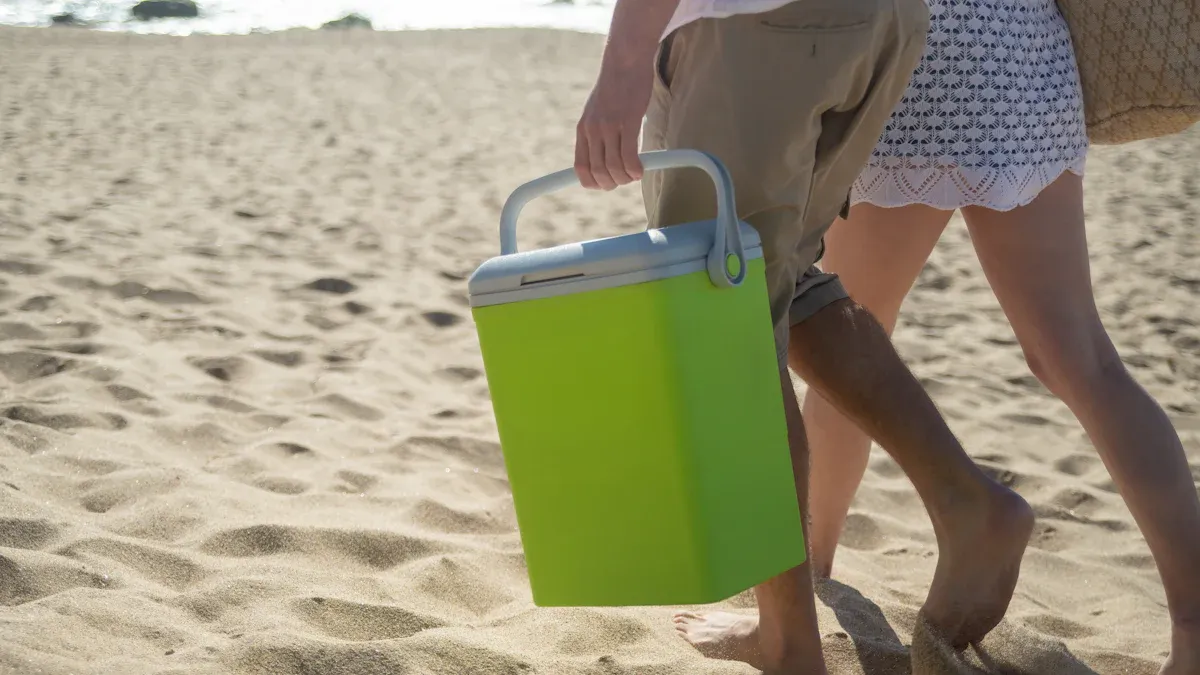
Beyond size and insulation, the right features can greatly improve your experience with a personal cooler bag. These details add convenience and make the bag more versatile for your specific activities. You should consider how you will carry the bag, what extra gear you need, and which built-in accessories will make your life easier. The best personal cooler bags offer thoughtful features designed for real-world use.
CARRYING STYLES
How you carry your cooler matters, especially when it is fully loaded. Different carrying styles offer unique ergonomic benefits. A simple handle works for short distances, but for longer treks, you need better support.
Ergonomic Carrying Benefits 🚶♂️
- Padded shoulder straps distribute weight evenly to reduce muscle fatigue.
- Waist straps shift the load to your hips, which helps you maintain balance and reduces back strain.
- A secure fit prevents the bag from bouncing, giving you more stability on uneven ground.
A comfortable carrying system allows you to travel farther with less effort. It also helps prevent long-term strain on your shoulders and back.
EXTERNAL STORAGE
Your cooler often travels with other essential items. Many personal cooler bags include external storage features to help you stay organized. These additions let you keep certain items handy without opening the main insulated compartment.
Common external storage options include:
- Pockets: You can find water-resistant exterior pockets perfect for stashing your phone, wallet, or keys.
- Daisy Chains: This webbing allows you to clip on extra gear like water bottles or tools.
- Bungee Cords: A stretchy bungee system on the outside is great for securing a jacket or a small towel.
These features add valuable utility to your personal cooler bag.
BUILT-IN ACCESSORIES
Modern coolers often come with clever built-in accessories. These features add convenience and set premium models apart. Some are simple, while others are highly innovative. For example, many bags include an integrated bottle opener so you are always prepared. Some advanced coolers even have vacuum ports that let you remove air to improve insulation.
Newer designs introduce even more specialized features. You might find a personal cooler bag with a dedicated padded compartment for a laptop or tablet. Other models offer expandable bottom sections for extra storage or attachments for carrying a headset. These thoughtful features transform a simple cooler into a multi-functional piece of gear.
You now know how to choose a cooler bag by evaluating four key areas. Your decision depends on size, durability, and quality insulation. Superior insulation is vital for long-term ice retention. Use this checklist to find your perfect personal cooler bag.
Your Final Checklist 📝
- What size fits my daily or adventure needs?
- How many hours of ice retention do I require?
- Is the bag built to last through my activities?
- Which features will make my trips easier?
You are now equipped with the expert knowledge to select a cooler that will serve you reliably on any occasion.
FAQ
How do I clean my personal cooler bag? 🧼
You should clean your bag after each use to prevent odors. First, empty all contents. Next, wipe the interior with a mix of mild soap and warm water. You can then rinse it with a clean cloth and let it air dry completely before you store it.
Should I use ice packs or regular ice?
Your choice depends on your needs. Ice packs are reusable and create less mess from melting water. Cubed ice cools contents faster because it has more surface area. For best results, you can use a combination of both to maximize cooling power and duration.
How can I make my ice last longer?
You can improve ice retention with a few simple tricks.
- Pre-chill your cooler and its contents before packing.
- Use a mix of large block ice and smaller cubed ice.
- Fill any empty space inside the cooler with towels to reduce air circulation.
Can I put hot food in my cooler bag?
You should avoid placing hot items directly into your cooler bag. The high heat can damage the waterproof liner and reduce the bag’s insulating ability over time. Let food cool to room temperature before you pack it to protect your gear and ensure food safety.

